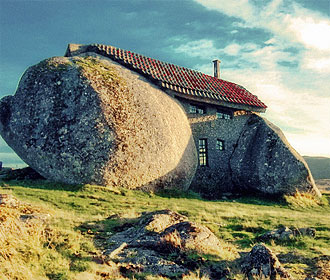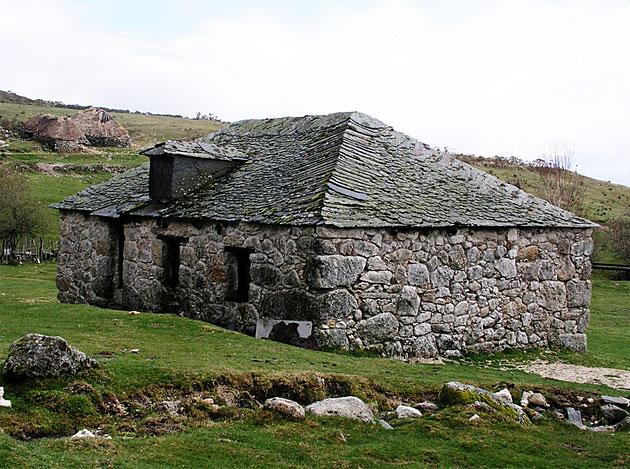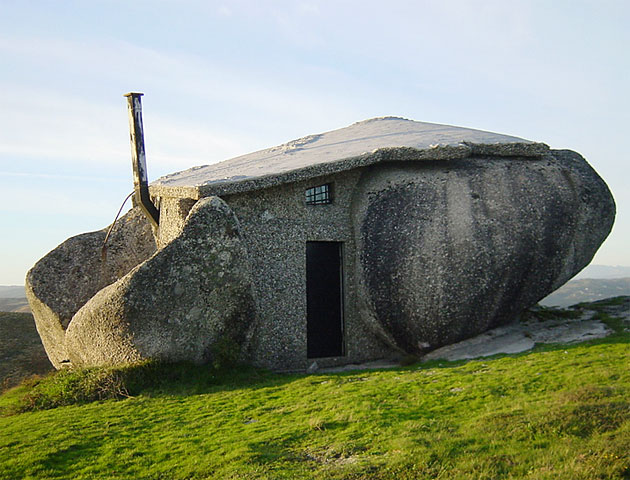Stone Homes
There are many low-cost options for home construction. A builder-owner
could use logs or cordwood, could construct using poles or wood-frame
construction, or might build an earth-sheltered dwelling or an
adobe home. Some enterprising do-it-yourself builders have even
constructed perfectly serviceable homes from salvaged materials.
For durability and attractiveness, however, stone is a solid choice.
 Stone Home in Portugal
Stone Home in Portugal |
|
Natural stone is plentiful, and often free. Many potential builders
already own property that has more stone than they would prefer,
so it makes sense to put it to good use. Or perhaps a local farmer
is clearing a new field and would be pleased to have someone remove
the stones that could damage his machinery.
Sometimes it is more desirable
to simply begin building, bypassing the time-consuming process
of gathering stone. In this case, rock quarries will typically
deliver as much stone as one wants in whatever size one desires.
This is still very cost-effective - the purchaser will need to
pay the cost of trucking, but the stone itself is usually very
inexpensive. In some areas, stone can even be collected from public
lands.

Stone and Earth Sheltered House
In addition to the stone, sand, gravel and cement are required.
The cement is used to pour the footers and also to act as mortar.
Some steel rebar will be needed for reinforcing lintels and corners.
People have been building with stone practically since time began,
and modern methods have made it much easier.
Building with stone is also far less labor-intensive than one
might think. In fact, two adults working together should be able
to erect a modest stone dwelling in just a few months.
As a building material,
the advantages of stone are unparalleled. Obviously,
stone will not rot. A stone structure, barring natural disaster,
will almost always outlast its builder, its builder's children,
and several generations yet to come. Even fire is not the disaster
it typically can be - if the interior of a stone house is gutted
by fire, the outer shell generally remains intact. Rodents, termites
and borers are no threat to stone, and rot is a non-issue. Maintenance
costs for stone are virtually non-existent. It needs no painting,
staining, varnishing or expensive siding.

Spanish Stone Home
Stone is available in a huge variety of colors, textures and
sizes. Walls can be of average thickness, or much thicker than
usual if larger stone is used. In areas where the climate is moderate,
stone walls can provide a high level of comfort, heating slowly
during the warmth of the day and then continuing to radiate the
warmth as the evening becomes cooler. The heat will dissipate
during the night, and then the structure will be somewhat cool
in the heat of the day.
In climates where the weather can be extremely hot or very cold,
of course the builder may wish to use some sort of supplemental
insulation. Of course, that would be necessary in a house built
out of practically any other material, too. As one would with
any other type of structure, it is wise to seal the cracks around
the windows and doors.

Modern "Flintstone" House
Conclusion
A stone house, to summarize, is easy to build, highly versatile,
and very economical to construct. It can also be a thing of beauty
for many centuries.
|

